Zoom! The boat zips through the mangrove maze as blue herons get scared off a branch nearby. Even the Dolphins swimming closely seem to race us! We’re nearing our next spot – a decent-sized flat with a deep cut, snuggled in the backwaters of the Everglades. As we approach, the signs are already present: the moving water, current flowing along the groves, the ripples and wakes… And of course, the rolling fins. We’re in for a real adventure.
This is a taste of what summer fishing in the Everglades can be like.
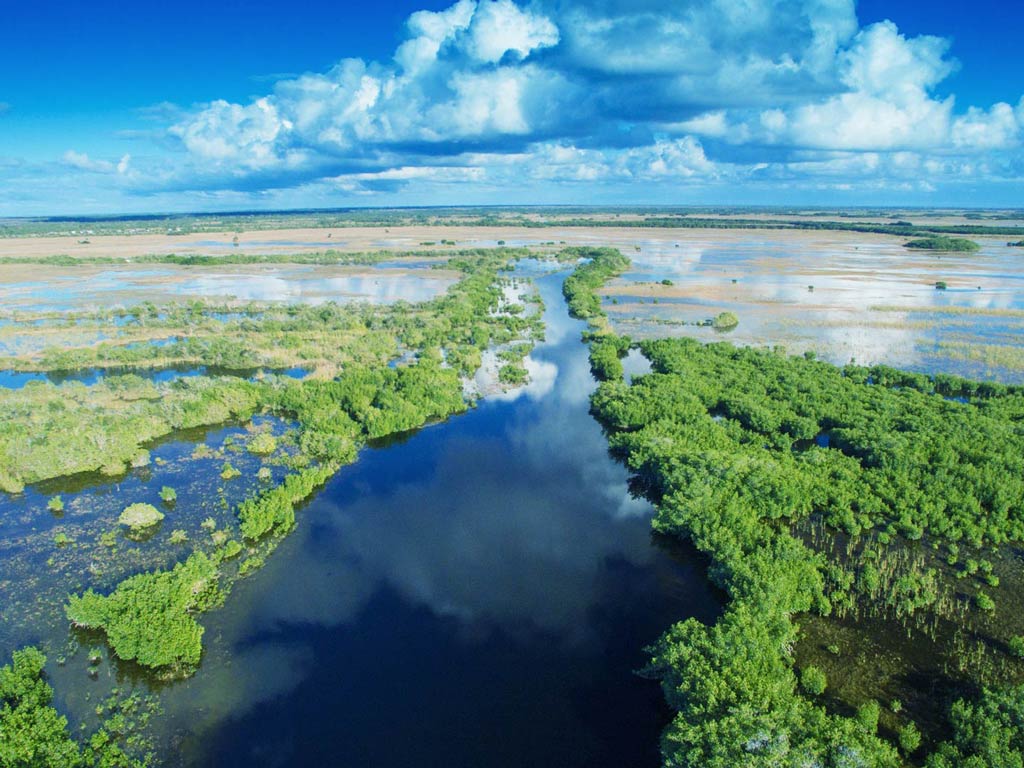
It’s exciting, intense, and always unique. You never know what you may face! Fishing in the ‘Glades is something you can successfully accomplish year-round, but summertime truly brings the heat. The fish are biting, the sun is shining, and the water, surrounding nature, and marine life are incredible. Plus, it’s the best time of the year to plan an island hangout or swim stop in between fishing!
What’s biting in the Everglades in summer?
Let’s talk about the Everglades’ summer fisheries. Lots of species are out and about, looking for a treat. There are many kinds you can encounter and hook up to, but there are a select few species that are heavily targeted and trophy-worthy.
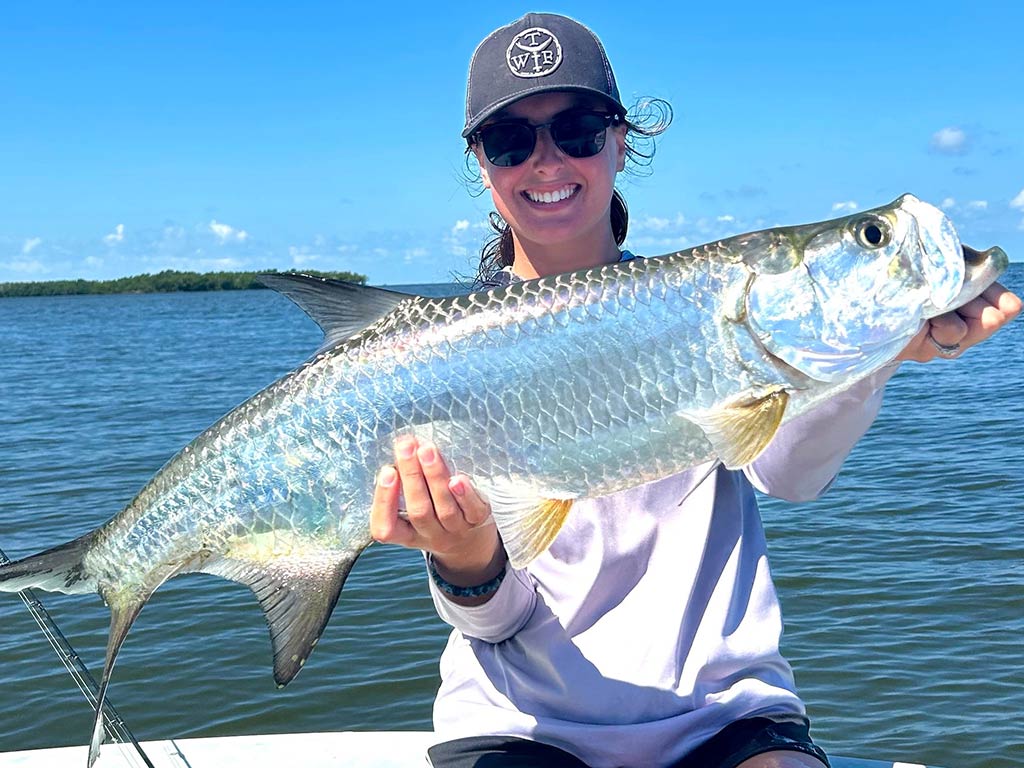
People from all around the world come down to the Everglades to experience its raw beauty and to get a chance at catching Tarpon, Snook, and Redfish. These make up the big three, with other popular appearances from Spotted Seatrout, Jack Crevelle, Mangrove Snapper, Grouper, and more. And of course, we can’t forget about the “Taxman!” Sharks are always present heavily down here, but summer and its warmth bring them out more.
What makes summer a great time to fish in the glades is that it’s the peak time for Tarpon migration. Sometimes we’re out there and see a bunch rolling at the same time, with some even lunging on bait out of the water! Snook and Redfish are also breeding in summer, making them feistier. When fish breed, they’re naturally more aggressive, territorial, and are known to strike hard on schools of bait.
Everglades Summer Fishing Basics
It can be tricky fighting a big game fish in the Everglades, mainly for two reasons: structure and Sharks. Luckily, there are a few techniques I can share with you.
Avoiding Structure

First, let’s discuss structure. There will be plenty of obstacles between you and your catch, such as trees, pilings, rocks, and oyster beds. The best thing you can do to avoid breakage or frayage is by upping your leader. I like to use 40 lb fluorocarbon leader when I fish in the Everglades. If we’re targeting big fish, I may go up even more. But there’s one thing to keep in mind – if the leader is too thick, there’s a risk of the fish getting suspicious and losing interest!
Honestly, when it comes to thick structure, you just have to try your best to pull the fish out and away. You can do this by keeping your drag tight, pulling your pole to the side and away from the structure, using the trolling motor to slowly pull back, and cupping the reel to provide some pressure. Just be careful, too much tension with any of these, and you can also break the line.
Avoiding Sharks
Now for Sharks – this can be even trickier. These predators sometimes pop up out of nowhere and they’re pretty quick, so you have to be even quicker! They can go after any species, whether it’s a small mullet or a huge Tarpon. At the end of the day, if they’re hungry, they’re targeting. Unfortunately, there isn’t a whole lot you can do, but the best technique is to try and reel your catch in as soon as you can and just keep your eyes out. Let the bail open and the fish run if a Shark tries to get it. Always ensure a great revival so they have energy to fight a Shark should they come after them afterwards. Trust me, this happens!
Top Everglades Summer Fishing Techniques
What about the most important part of fishing – the “how-to”? Well, it’s kind of up to you when it comes to what technique you want to utilize. But I can tell you a few trusted methods I use…

I like it old school, so putting a bait on a hook (with an optional sinker) and throwing it down until I feel a bite is always a good start. I like to throw live bait, like mullet, pilchards, shrimp, and crabs, along the mangrove lines, flats, oyster beds, near structure, in a flowing current, and near drop-offs. Once I feel a thump, I let it eat for a second before reeling in and creating balanced tension. From there, it’s all about steering the fish towards me, keeping the tension balanced, and the fish away from structure. Just remember to pull your rod up, reel down, and repeat.
If I’m using artificials, then the approach can be different and a bit more versatile. I like topwater lures a lot. To work those, I just cast out past or on top of the action and then slightly twitch and reel so the lure is zig-zagging across the surface and I can hear that clicking sound. If it’s a paddle tail and jig head, I like to get it near structure, let it hit the bottom, then bounce it there, before doing a reel, jerk, reel, jerk motion. Sometimes, I also like to throw a paddle tail or jig in a moving current and just let it freely flow there. That’s actually how I got my first ever Redfish!
Top Everglades Summer Fishing Gear

Unsure on what to bring along for your summertime Everglades fishing trip? My go-to Everglades setup is a 5K Shimano Nasci reel paired with an 8′ Starrod Plasma II rod, and a circle hook ranging between 3/0 and 5/0. If I’m fishing a lure, I’ll go for a topwater, paddle tail and jighead, or a jig.
Honestly, there are so many proven-to-work options – and opinions – on what type of gear, setup size, lures, hooks, and leader sizes to bring along when fishing… It all depends on your preferences, targeted species, and the day’s conditions. I would say just focus on gear for medium action – or medium-heavy action if you’re targeting big species.
For Sharks and huge Tarpon, you’ll want even heavier gear, such as an 8000-sized reel and extra heavy pole. You can also use a heavy leader (around 80–100 pounds) for bigger Tarpon or wire leader for Sharks, as their teeth alone can break the line if it’s in the wrong spot!
Other Essentials
Beyond setups, there are a few more things you may want to consider. A bait net, fish net, cast net, pliers, de-hooker, food, water, bug spray, and storm-coverage clothes are essentials.
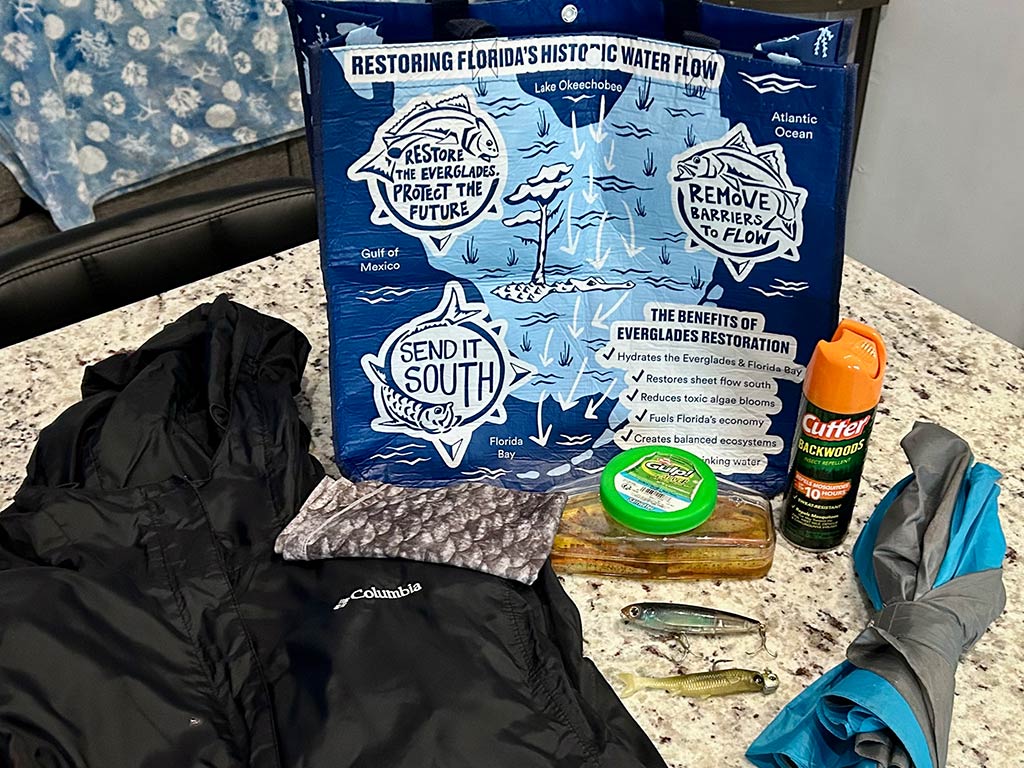
Let me explain the latter a little more… It’s no secret that Florida is famous for its summer storms – with some weeks seeing them occurring on a daily basis! With that being said, if you’re ‘Glades fishing in the summer, there’s a good chance you may face a storm. Fishing can be pretty good around the storms, so if you’re brave enough to face it, bring waterproof gear like a jacket, hat, and buff, an umbrella, and a change of clothes for the ride home. And always keep yourself safe and stay clear of lightning.
On the other hand, clothes can be used for something else beneficial – keeping yourself safe from mosquitoes and no-see-ums! You have to take it from me – someone who has lived through this many times – the bugs are absolutely terrible! If you’re out there around dawn and dusk, you’ll want to cover yourself head to toe and bring plenty of bug spray. While that may not sound so pleasing, the good news is that more bugs means more fish lunging at the surface! I’ve seen decent Tarpon jump for large mosquitoes before, so while it may suck getting bitten by bugs, the fishing can make it all worth it.
To add, UPF shirts, hats, sunglasses, and sunscreen are all very helpful when that intense summer heat comes out, too.
Finally, it’s also essential to have a valid Florida saltwater fishing license when fishing the waters of the Everglades. If you plan to fish on land, get a freshwater license, and try out the canals off Tamiami Trail or the docks in Everglades City. You can get a license easily online, or in most bait shops and sport stores.
When and Where to Go Fishing
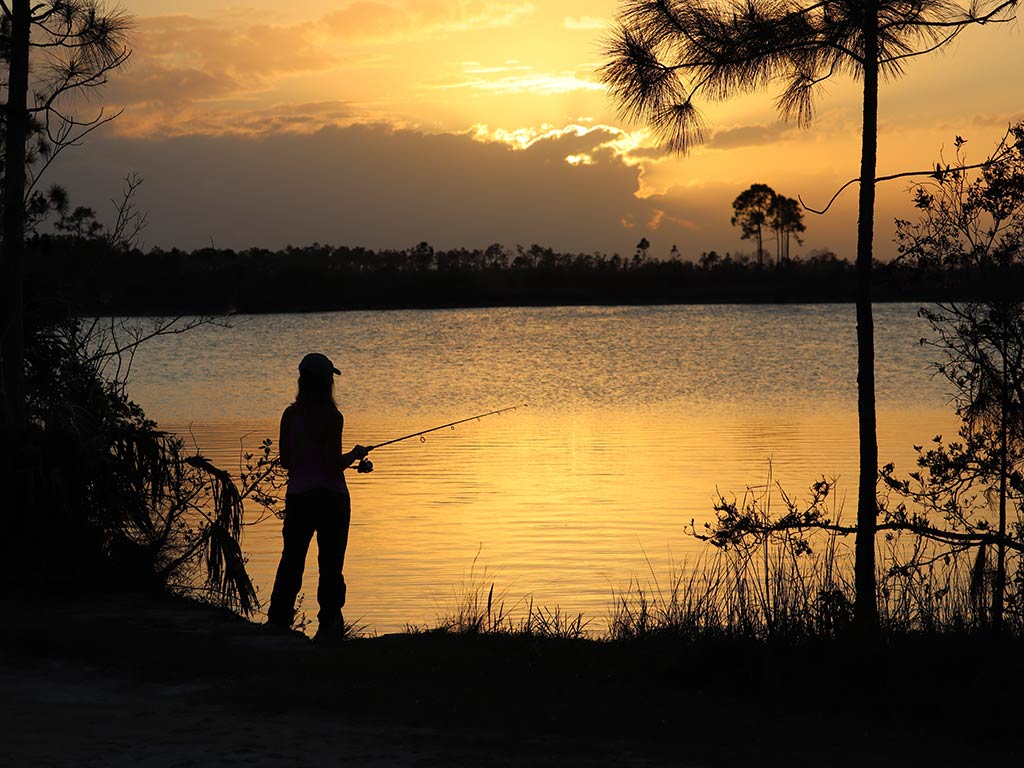
Before we part ways, I want to leave you with an important piece of fishing that will help you on your Everglades fishing journey – knowing when and where to go. When it comes to summer in the Everglades, the best time to go fishing is at dawn and dusk, although midday can still provide results.
Not only is time of day influential, but the tides are even more important for summer fishing. The fish of the Everglades are very dependent on the tide. When the tide gets low, the backwaters are very shallow and exposed, so fish will head to deeper cuts and passes to seek shelter and where all the bait and crustaceans are flushed out to. An incoming tide is the best to fish in the Everglades, especially when the current is flowing. That way, you can fish the true heart of the ‘Glades – all the mangrove islands, channels, bays, cuts, flats, oyster beds, points, and more. The fish will flow into all the cracks and crevices when the water allows.
In addition, the moon phase plays a great part in our summertime Everglades fisheries. Most specifically, when the new and full moons are around, the fish come out to play, getting more aggressive and feistier than normal. Around spring and neap tides (when the moon, sun, and earth align a certain way), the tides can fluctuate crazily, creating more intense reactions from fish.
Another factor to consider is that barometric pressure shifts are something that fish can sense. When these occur, the fish tend to get more active. They do this because they sense a change coming and think they should prepare food. Barometric shifts are most common right around a storm, hence a big reason why fishing in a storm can pose potential good catches!
Everglades Summer Fishing: The Best of the Sunshine State
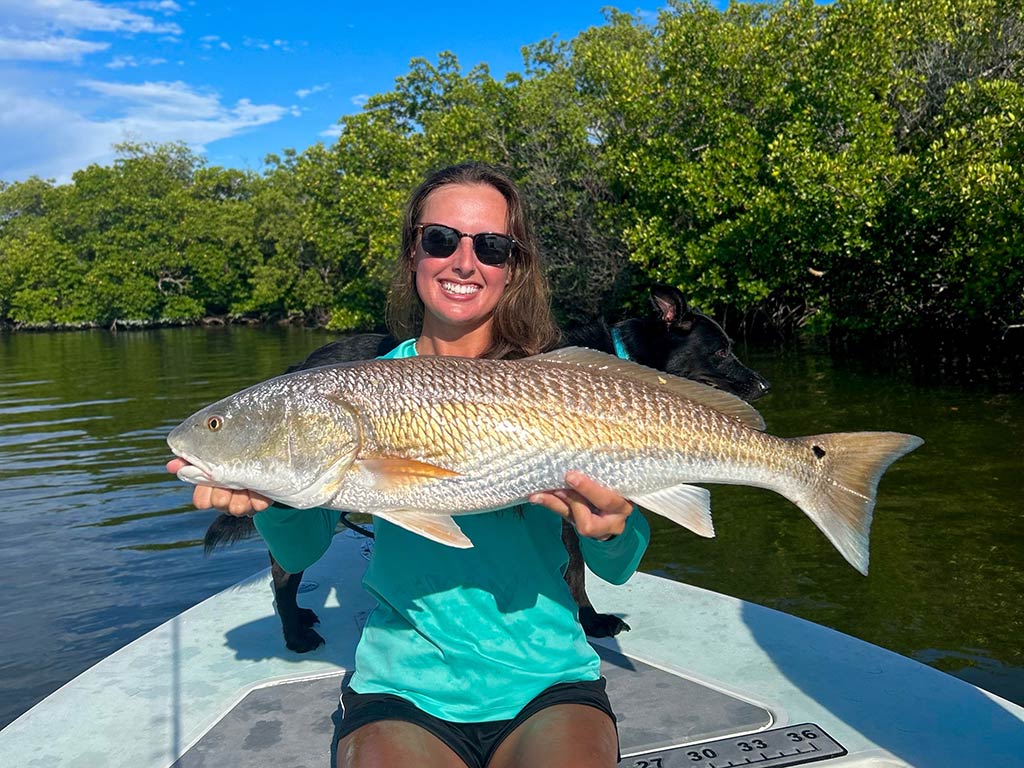
As you can see, summertime fishing in the Everglades really does bring the heat – both figuratively and literally! Between the warmth, bugs, storms, and Sharks, there’s potential to run into some obstacles. But if you’re brave, determined, and patient, you’re in for a real treat. The weather and scenery are gorgeous, the game fish are ready to strike, and the vibes are good.
Schools of Tarpon roll by passing Snook. Little crabs stroll along the islands with the raccoons. And dolphins and rays leap into the air right in front of your eyes. It’s a beautiful sight, one you’ll be lucky to see with your own eyes. And, if you’re even luckier, you can land your next trophy catch!
One thing is for sure: the marine life is very abundant and there are plenty of fish waiting for your hook or lure to land by them. If you’re ready to gear up for your next trip, I wish you luck and hope you learned something you can take with you. Tight lines!
Have you ever been fishing in the Everglades? When’s your favorite season? Any tips to share with your fellow anglers? Chime in the comments below and let us know!


